Exam Details
Exam Code
:HPE6-A48Exam Name
:Aruba Certified Mobility Expert 8 WrittenCertification
:HP CertificationsVendor
:HPTotal Questions
:61 Q&AsLast Updated
:Mar 28, 2025
HP HP Certifications HPE6-A48 Questions & Answers
-
Question 11:
Refer to the exhibit.
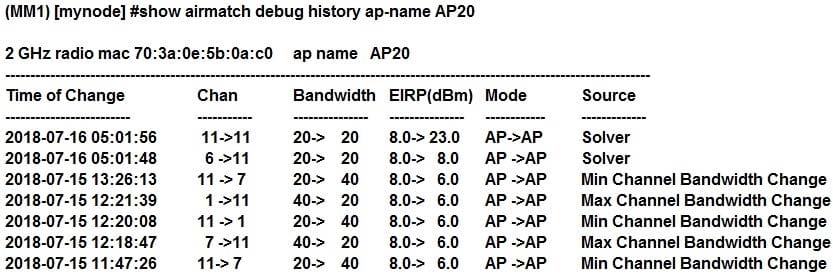
Help desk staff receive reports from users that there is inefficient wireless service in a location serviced by AP20, AP21, and AP22, and open a ticket. A few hours later, the users report that there is a drastic improvement in service. The staff still wants to determine the cause of the problem so the next day thay start monitoring the tasks.
They access the Mobility Master (MM), and obtain the output shown in the exhibit.
What could be the cause of the problem that the users reported?
A. AirMatch was running an initial incremental optimization.
B. An operator used AirMatch to manually freeze AP channel and power.
C. An operator manually assigned settings in the radio profile.
D. AirMatch was running a full on-demand optimization.
-
Question 12:
A financial institution contacts an Aruba partner to deploy an advanced and secure Mobility Master (MM)Mobility Controller (MC) WLAN solution in its main campus and 14 small offices/home offices (SOHOs). Key requirements are that users at all locations, including telecommuters with VIA, should be assigned roles with policies that filter undesired traffic. Also, advanced WIPs should be enforced at the campus only.
These are additional requirements for this deployment:
RAPs should ship directly to their final destinations without any pre-setup and should come up with the right configuration as soon as they get Internet access. Activate should be configured with devices MACs, serial numbers, and provisioning rules that redirect them to the standalone VMC at the DMZ Users should be able to reach DNS, FTP, Web and telephone servers in the campus as well as send and receive IP telephone calls to and from the voice 10.1.50.0/24 segment. Local Internet access should be granted.
Refer to the exhibit.

Refer to the scenario and the exhibit.
What is the minimal license capacity in use to support this proposal?
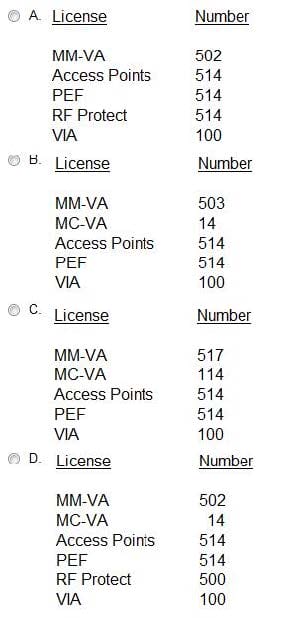
A. Option A
B. Option B
C. Option C
D. Option D
-
Question 13:
A financial institution contacts an Aruba partner to deploy an advanced and secure Mobility Master (MM)Mobility Controller (MC) WLAN solution in its main campus and 14 small offices/home offices (SOHOs). Key requirements are that users at all locations, including telecommuters with VIA, should be assigned roles with policies that filter undesired traffic. Also, advanced WIPs should be enforced at the campus only.
These are additional requirements for this deployment:
RAPs should ship directly to their final destinations without any pre-setup and should come up with the right configuration as soon as they get Internet access. Activate should be configured with devices MACs, serial numbers, and provisioning rules that redirect them to the standalone VMC at the DMZ Users should be able to reach DNS, FTP, Web and telephone servers in the campus as well as send and receive IP telephone calls to and from the voice 10.1.50.0/24 segment. Local Internet access should be granted.
Refer to the exhibit.

Refer to the scenario and the exhibit.
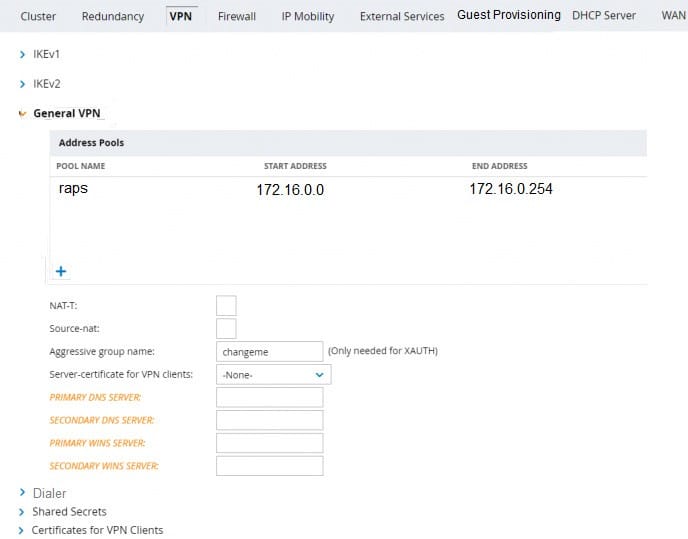
The standalone VMC will act as a VPN Concentrator of the RAPs. The network administrator configures the Standalone VMC with a pool of addresses and the SOHOs AP Group from the MM.
Which additional steps must the network administrator perform to allow the RAPs to terminate their IPSec tunnels and associate to the Standalone VMC?
A. Add RAP MAC addresses into the RAP whitelist, and associate them with the SOHOs AP-Group.
B. Add RAP MAC addresses into the CPSec whitelist, and associate them with the SOHOs AP-Group.
C. Configure the same IP Pool at the MM group level, then create user accounts for the RAPs in the internal database.
D. Create user accounts with the sys-ap-role, and define shared secrets to associate to RAP IP addresses at the MM group level.
-
Question 14:
A financial institution contacts an Aruba partner to deploy an advanced and secure Mobility Master (MM)Mobility Controller (MC) WLAN solution in its main campus and 14 small offices/home offices (SOHOs). Key requirements are that users at all locations, including telecommuters with VIA, should be assigned roles with policies that filter undesired traffic. Also, advanced WIPs should be enforced at the campus only.
These are additional requirements for this deployment:
RAPs should ship directly to their final destinations without any pre-setup and should come up with the right configuration as soon as they get Internet access. Activate should be configured with devices MACs, serial numbers, and provisioning rules that redirect them to the standalone VMC at the DMZ Users should be able to reach DNS, FTP, Web and telephone servers in the campus as well as send and receive IP telephone calls to and from the voice 10.1.50.0/24 segment. Local Internet access should be granted.
Refer to the exhibit.

Refer to the scenario and the exhibit.
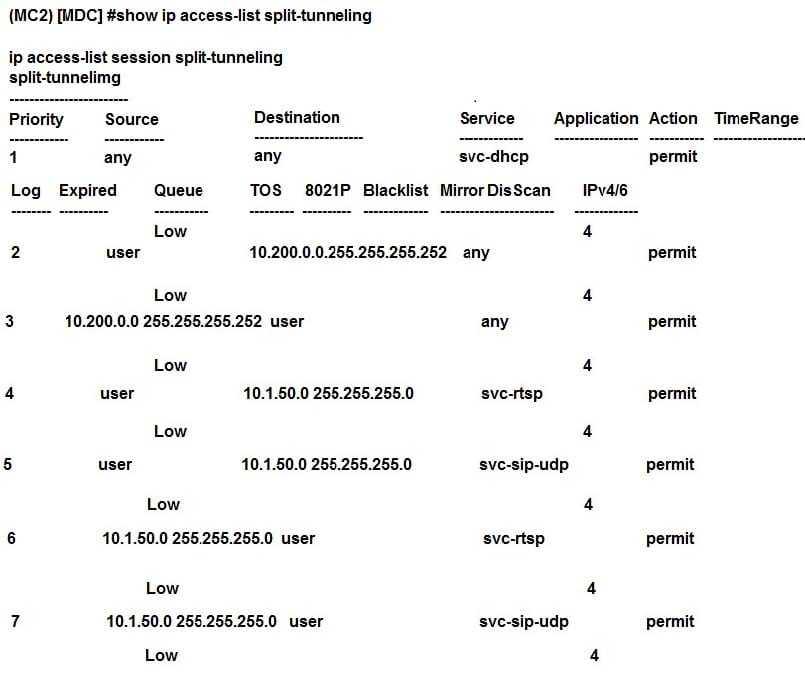
Which command must the network administrator add in the split-tunneling policy to meet the requirements for the RAP employee SSID?
A. user any svc-http permit
B. user any any src-nat pool dynamic-srcnat
C. any user any src-nat pool dynamic-srcnat
D. user any any dst-nat
-
Question 15:
Refer to the exhibit.

A network administrator completes the initial configuration dialog of the Mobility Controllers (MCs) and they join the Mobility Master (MM) for the first time. After the MM-MC association process, the network administrator only creates AP groups, VAPs, and roles. Next, the network administrator proceeds with the configuration of the policies and creates the policy shown in the exhibit.
Which additional steps must be done to make sure this configuration takes effecr over the contractor users?
A. Apply the policy in the contractors user role. Enable deep packet inspection.
B. Apply the policy in the contractors user role. Enable deep packet inspection. Reload the MCs.
C. Enable the firewall visibility. Enable web-content classification Reload the MCs.
D. Enable firewall visibility Enable web-content classification Reload the MMs.
-
Question 16:
Refer to the exhibit.
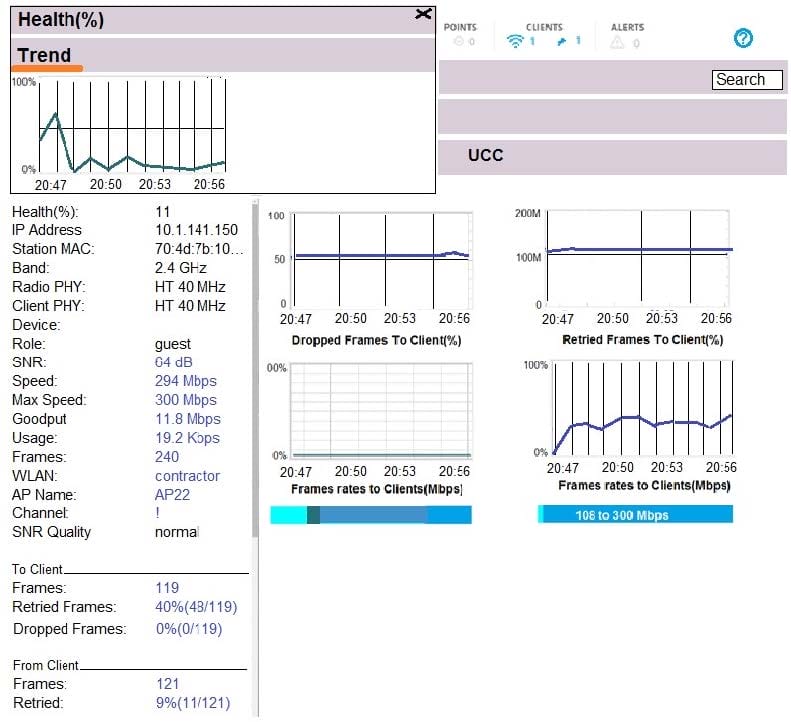
A user's laptop only operates in the 2.4 GHz band and supports 802.11n. This user reports that the network is slow at the cafeteria that is serviced by three APs, and suggests that there might be a problem with the WLAN. The network administrator finds the user in the MM, and obrains the output shown in the exhibit.
What should the network administrator do to optimize the client connection?
A. Disable lower transmit rates in the SSID profile.
B. Change the channel being used in the radio profile.
C. Reduce Min/Max channel bandwidth in the radio profile.
D. Reduce Min/Max EIRP in the ARM profile.
-
Question 17:
Refer to the exhibit.

A network administrator completes the task to cretae a WLAN, as shown in the exhibit. The network administrator selects the options to use guest as primary usage and Internal captive portal with authentication in the security step. Next, the network administrator creates a policy that denies access to the internal network.
Which additional step must the network administrator complete in order to prevent authenticated users from reaching internal corporate resources while allowing Internet access?
A. Apply the policy on the guest-guest-logon role.
B. Apply the policy on the authenticated role.
C. Apply the policy on the guest role.
D. Create a policy that permits dhcp, dns, and http access.
-
Question 18:
Refer to the exhibits.
Exhibit 1

Exhibit 2
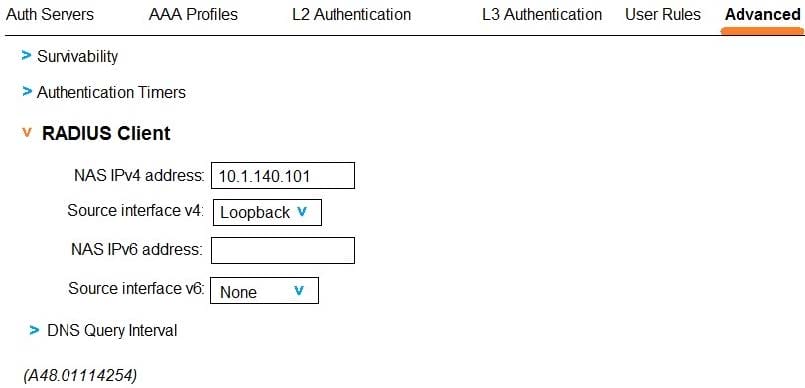
Exhibit 3
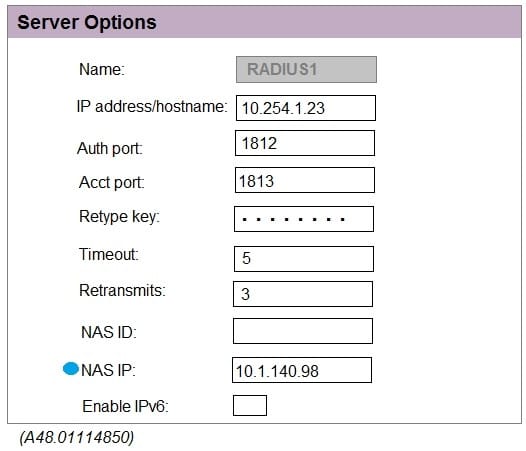
A network administrator must ensure that a ClearPass server can receive the RADIUS authentication request from a single Mobility Controller (MC) managed by a Mobility Master (MM). Based on the exhibits, what is the value of NAS-IP contained in the RADIUS access requests?
A. 10.1.140.98
B. 10.1.140.99
C. 10.1.140.100
D. 10.1.140.101
-
Question 19:
Refer to the exhibit.
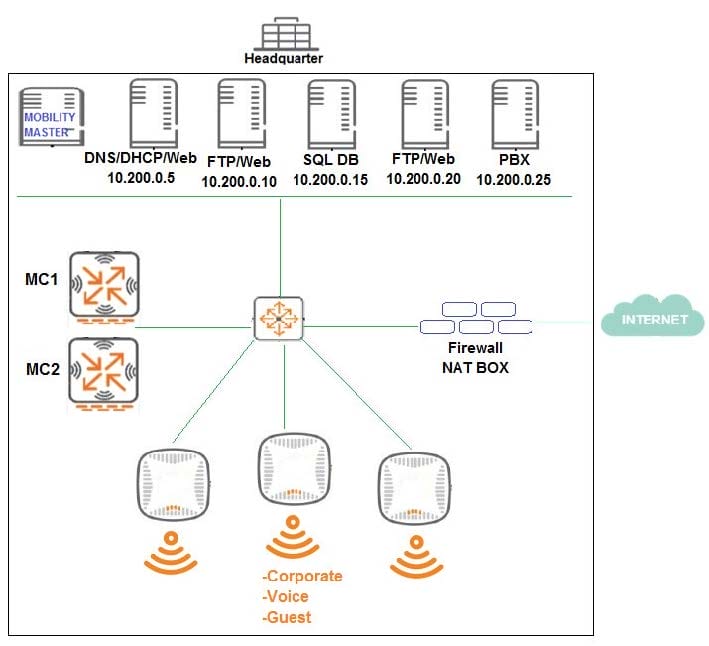
An organization provides WiFi access through a corporate SSID with an Aruba Mobility Master (MM)Mobility Controller (MC) network that includes PEF functions. The organization wants to have a single firewall policy configured and applied to the employee role.
This policy must allow users to reach Web, FTP, and DNS services, as shown in the exhibit. Other services should be exclusive to other roles. The client NICs should receive IP settings dynamically.
Which policy design meets the organization's requirements while minimizing the number of policy rules?
A. netdestination alias1 host 10.200.0.10 host 10.200.0.20 ip access-list session policy1 user host 10.200.0.5 svc-dns permit user host 10.200.0.5 svc-http permit
user alias alias1 svc-http permit user alias alias1 svc-ftp permit
B. netdestination alias1 host 10.200.0.5 host 10.200.0.10 host 10.200.0.20 netdestination alias2 host 10.200.0.10 host 10.200.0.20 ip access-list session policy1 any any svc-dhcp permit user host 10.200.0.5 svc-dns permit user alias alias1 svc-http permit user alias alias2 svc-ftp permit
C. netdestination alias1 host 10.200.0.10 host 10.200.0.20 ip access-list session policy1 any any svc-dhcp permit user host 10.200.0.5 svc-dns permit user host 10.200.0.5 svc-http permit user alias alias1 svc-http permit user alias alias1 svc-ftp permit
D. netdestination alias1 host 10.200.0.5 host 10.200.0.10 host 10.200.0.20 netdestination alias2
-
Question 20:
A network administrator wants to receive a major alarm every time a controller or an Aruba switch goes down for either a local or an upstream device failure. Which alarm definition must the network administrator create to accomplish this?
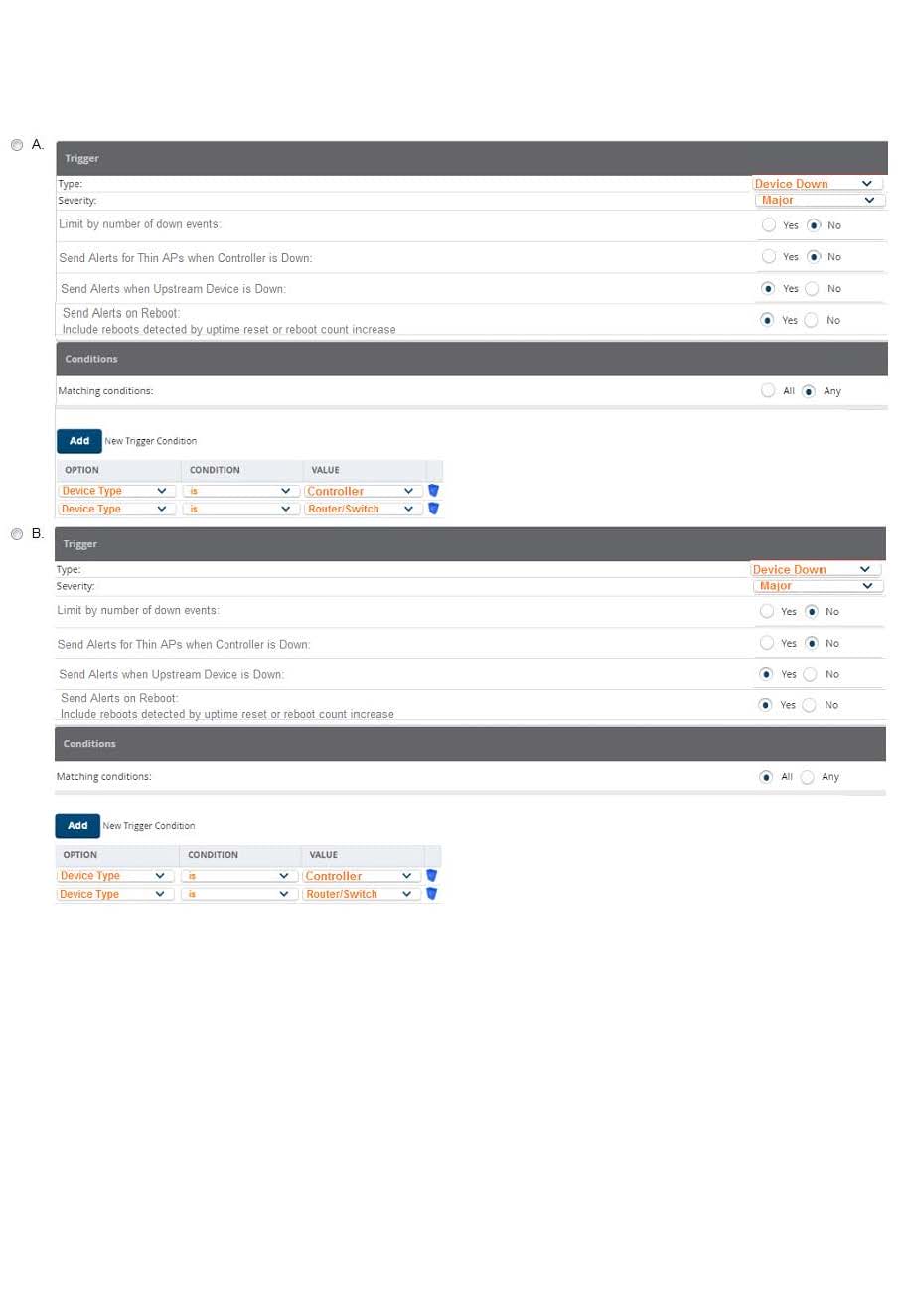

A. Option A
B. Option B
C. Option C
Related Exams:
HP0-D15
Administering HP CloudSystem Matrix SolutionsHP0-D20
Architecting the HP Matrix Operating EnvironmentHP2-E56
Selling HP SMB SolutionsHP2-H88
Selling HP Business Personal Systems Hardware 2019HP2-I14
Selling HP Supplies 2020HP2-I15
Selling HP Business Personal Systems Hardware 2020HP2-I17
Selling HP Printing Hardware 2020HP2-I44
Selling HP Workstations 2022HP2-I73
Selling HP Retail and Hospitality Solutions 2024HP2-N51
HP Application Lifecycle Management 12.x Software
Tips on How to Prepare for the Exams
Nowadays, the certification exams become more and more important and required by more and more enterprises when applying for a job. But how to prepare for the exam effectively? How to prepare for the exam in a short time with less efforts? How to get a ideal result and how to find the most reliable resources? Here on Vcedump.com, you will find all the answers. Vcedump.com provide not only HP exam questions, answers and explanations but also complete assistance on your exam preparation and certification application. If you are confused on your HPE6-A48 exam preparations and HP certification application, do not hesitate to visit our Vcedump.com to find your solutions here.